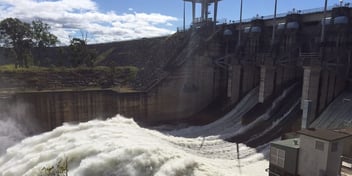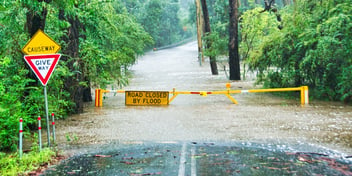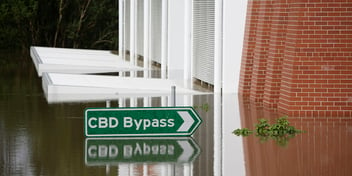For floods, prevention beats recovery
With floods spilling across the east coast of Australia this past week, one expert asks: how long does the country need to wait for effective flood protection?
The flood crisis in New South Wales, Queensland and Victoria has resulted in thousands of calls for help from residents, as their homes flood and roads are swept away. In NSW, the State Emergency Service has been praised by both members of the public and Floodplain Management Australia President Ian Dinham.
“With over 8000 calls for assistance and more than 800 flood rescues from the mid-north coast [of NSW] to the Illawarra since the weather system started and more rain to fall in coming days, the emergency services volunteers will be exhausted, but still dedicated until of all this is over,” Dinham said.
All states rely on their SES every time a natural disaster occurs, yet, according to Dinham, we must be preparing for events rather than dealing with the aftermath. As the saying goes, prevention is the best form of protection.
“Every time we have a natural disaster we rely on the SES to solve our problems instead of preparing for such events with better investment in preventative measures as recommended in last year’s Royal Commission into Natural Disasters report,” Dinham said.
“And each time the disaster subsides it is then up to the local councils to deal with the recovery and clean up at the expense of our local communities. Then we find our insurance premiums increase and the mums and dads pay for it again.”
With the rainfall starting to ease in NSW, Victoria remains on high alert, with heavy rainfall, localised flooding and rapid water rises including rivers, gullies, creeks, and even areas that don’t usually receive flood warnings. While Melbourne is likely to miss the worst of it, regional Victoria is unlikely to fare so well.
The story is the same in Queensland, with residents warned to remain vigilant as rivers reach the tipping point. Rapidly rising water, especially in the Logan River, has authorities concerned about flash flooding, and, across the state, emergency services responded to more than 1400 calls for help within the first 48 hours of the deluge.
According to Deloitte Access Economics, natural disasters currently cost more than $560 million annually. This is forecast to rise to more than $39 billion per year by 2050.
For the past 60 years, Floodplain Management Australia has been advocating for government policies and strategies to focus on reducing future flood losses, rather than encouraging repeated repair and replacement of buildings and infrastructure that have been damaged by natural disasters.
Dinham said that the government isn’t yet addressing the problem.
“Governments come and go without seriously addressing the problem. The Hawkesbury-Nepean Valley in western Sydney, where evacuations are presently underway, is one such example. It has been described as Australia’s largest untreated flood exposure,” he said.
“With 60,000 people living on the floodplain below Warragamba Dam, which is currently spilling over, one has to ask: how long must we wait for effective flood protection for the Hawkesbury-Nepean community?”
According to Dinham, Australia needs a whole-government response to flooding, which hasn’t come in time for the current crisis.
“However, as we watch this current crisis, we can only hope the SES and other emergency service personnel can continue to help people until it’s over and the television coverage goes back to normal,” he said.
Then, it becomes a matter of planning ahead for the next big flood disaster.



